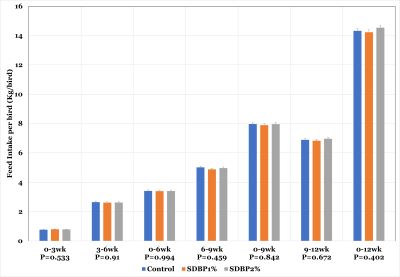Evaluation of dietary spray-dried bovine plasma fed to turkeys during brooding on performance to market age
Authors: Ashley A. Gernat, Joy Campbell, Adam Fahrenholz and Jesse Grimes
Ger. J. Vet. Res
2023.
vol. 3, Iss. 2
pp:16-26
Doi: https://doi.org/10.51585/gjvr.2023.2.0054

Abstract:
Commercial turkey production can experience an economic loss due to exposure of birds to stress. Turkeys can undergo various levels of stress, including, but not limited to, hatching, brooding/growing, and transport. Temperature, climate, heat, and cold stress are major livestock stressors associated with economic losses. Exposure to stress also causes an increased probability of infections and diseases that have a negative financial impact on production. In this study, Large White commercial turkey hens were reared for 12 weeks (wk) to evaluate their stress responses and performance alterations due to induced stress through a mimic of brooder house to grow-out transition. Parameters for performance, blood, and meat yield were recorded. Spray-dried bovine plasma (SDBP) was formulated iso-nutritionally into the diets. SDBP has been shown to be an ingredient in animal diets that may help support immune health and positively affect performance. This ingredient was used for a total of 6 wk in the starter and grower-1 diets at different inclusion percentages. Treatments included a control diet (0% SDBP), 1.0% (SDBP1), and 2.0% (SDBP2) inclusion. At 6 wk, common diets were fed (grower-2 and finisher-1). At 5 wk management-based stressors were applied for 24 hours (h): feed and water restriction and reduced house temperature. Previously used pine shavings were used for bedding. No significant variances were noted in body weight, weight gain, or feed consumption as a result of the different feed treatments. However, during the sixth week, the feed conversion ratio (FCR) was improved due to SDBP inclusion. The FCR for SDBP1 (1.90) and SDBP2 (1.97) birds was lower than that of the control diet-fed birds (2.04). No difference in FCR was observed at 12 wk. A significant difference was observed for corticosterone levels post-stress: SDBP1 (23.81 ng/mL) and SDBP2 (19.17 ng/mL) were higher than that of the control birds (16.40 ng/mL). Further research is needed to ascertain the impact of SDBP on the immune function and production of turkeys.
Keywords:
Turkeys, Performance, Stress, Corticosterone, Nutrition, Spray-dried plasma
Statistics:
Article Views: 1404
PDF Download: 33